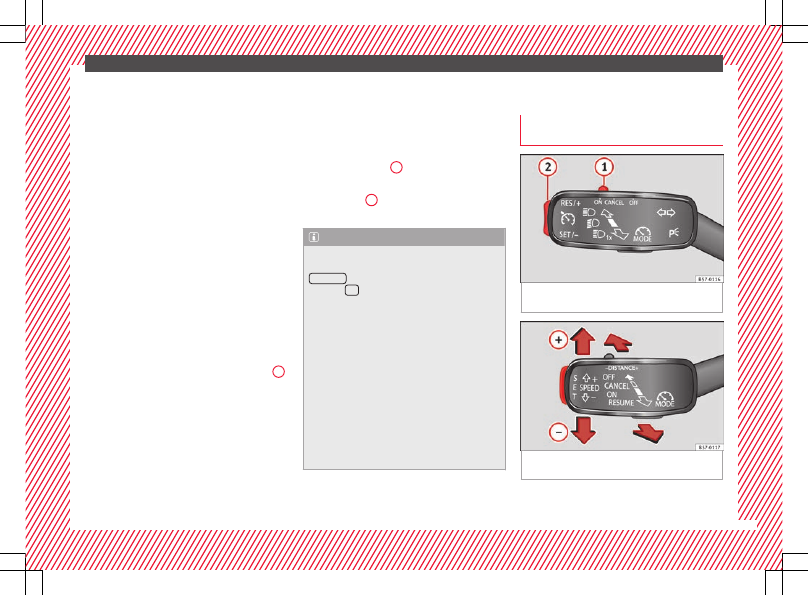Seat Ateca. Service Manual - part 3
-------------------------------------------------------------------------------------------------------------------------------------------------------------

The essentials
the display mode changes. A clock symbol
appears and the number of days until the
next service is due.
Vehicles with text messages:
Service in
--- km or --- days
will be shown on the
instrument panel display.
Service due
When
the service date is due, an audible
warning is given when the ignition is switch-
ed on and the spanner displayed on the
screen flashes for a few seconds .
Vehicles with text messages:
Service now
will be shown on the instrument panel dis-
play.
Reading a service notification
With the ignition switched on, the engine off
and the vehicle at a standstill, the current
service notification can be read:
Press and hold the button
›››
4
for more than 5 seconds to consult the serv-
ice message.
When the
service date has passed, a minus
sign is displayed in front of the number of kil-
ometres or days.
Vehicles with text messages: the following
message is displayed:
Service --- km
(miles) or --- days ago
.
Resetting service interval display
If the service was not carried out by a SEAT
dealership, the display can be reset as fol-
lows:
●
Switch off the ignition, press and hold but-
ton
›››
●
Switch ignition back on.
●
Release the
4
›››
button and
press it again for the next 20 seconds.
Note
●
The service message disappears after a few
seconds, when the engine is started or when
OK/RESET
is pressed on the windscreen wiper
lever, or
OK
on the multifunction steering
wheel.
●
In vehicles with the LongLife system in
which the battery has been disconnected for
a long period of time, it is not possible to cal-
culate the date of the next service. Therefore
the service interval display may not be cor-
rect. In this case, bear in mind the maximum
service intervals permitted in the
›››
Book-
let Maintenance Programme
.
●
If you reset the display manually, the next
service interval will be indicated as in vehi-
cles with fixed service intervals. For this rea-
son we recommend that the service interval
display be reset by a SEAT authorised Dealer.
Cruise control
Operating the cruise control system
(CCS)*
Fig. 47
On the left of the steering column:
switches and controls for operating the CCS
Fig. 48
On the left of the steering column:
third lever to operate the CCS.
»
37